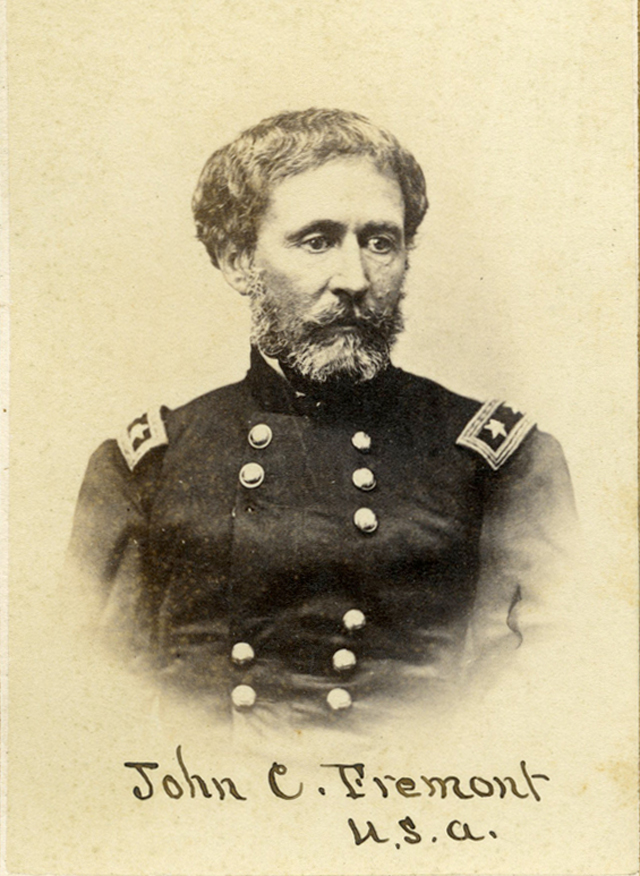JEFFERSON C. DAVIS, Jefferson City:
What is the strength of Price, according to latest accounts?
J. C. FRÉMONT,
Major-General, Commanding.
–––
JEFFERSON CITY, September 15, 1861.
Major-General FRÉMONT:
Information, reliable, just received, shows Price at Warrensburg with
11,000; Parsons at Georgetown with 4,000. Green had not probably crossed
the La Mine near Booneville last night, so I ordered my troops not to
make the march from Syracuse until to-night. As soon as he has crossed I
have ordered the bridge destroyed. Two Indiana regiments have arrived.
JEFF. C. DAVIS.
 | |||
Col. Davis later become General Jefferson C. DavisJefferson Columbus Davis (March 2, 1828 – November 30, 1879) was a regular officer of the United States Army during the American Civil War, known for the similarity of his name to Confederate President Jefferson Davis and for his killing of a superior officer in 1862.Davis' distinguished service in Mexico earned him high prestige at the outbreak of the Civil War, when he led Union troops through Southern Missouri to Pea Ridge, Arkansas, being promoted Brigadier General after that significant victory. Following the Siege of Corinth, he was granted home leave on account of exhaustion, but returned to duty on hearing of Union defeats in Kentucky, where he reported to General William "Bull" Nelson at Louisville in September 1862. Nelson was dissatisfied with his performance, and insulted him in front of witnesses. A few days later, Davis demanded an apology, but the two officers came to blows, and Davis mortally wounded the unarmed Nelson with a pistol.Davis avoided conviction, due to the shortage of experienced commanders in the Union Army, but the incident hampered his chances for promotion. He would serve as a corps commander under William Tecumseh Sherman during his March to the Sea in 1864. After the war, Davis was the first commander of the Department of Alaska from 1867 to 1870, and assumed field command during the Modoc War of 1872-1873. |
JEFFERSON CITY, September 15, 1861.
Major-General FRÉMONT:
Reliable information from the vicinity of Price’s column shows his
force to be 11,000 at Warrensburg and 4,000 at Georgetown, with pickets
extending in the direction of Syracuse. Green is making for Booneville.
JEFF. C. DAVIS.
–––
JEFFERSON CITY, September 16, 1861.
General JOHN C. FRÉMONT:
Booneville tranquil. Indiana troops marched across the country last
night from Syracuse. No intelligence from Lexington to-day. Green is
augmenting his forces from the other side of the river. Secession
{p.176}
feeling increasing and people rising, particularly in Howard County.
Rains have been excessive for the last four days, but we are persevering
in our works.
JEFF. C. DAVIS.
–––
JEFFERSON CITY, September 16, 1861.
My spy has just returned from Price’s camp, not far from Lexington. He
left Warrensburg yesterday, and says they report their number at 14,000.
The fight at Lexington was a sortie made by Mulligan on Thursday. A
regular attack had not been made up to Saturday.
JEFF. C. DAVIS,
Colonel.
General JOHN C. FRÉMONT.




No comments:
Post a Comment